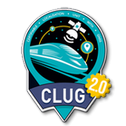NEWS
Onboard Localisation Systems: The key to unlocking the full potential of EU rail transport

Sustainable transportation is an increasingly important topic in today's world due to the need to reduce greenhouse gas emissions. In this context, the railway has emerged as an increasingly attractive alternative: offering safer, cleaner, and more efficient solutions to become users’ preferred mode of transport. In the European Union, the railway has consolidated itself as one of the most environmentally friendly forms of transportation, responsible for less than 0.5% of transport-related emissions for 8% of the total number of passenger travels (Statista, 2018).
To improve the efficiency of rail transport throughout the EU, interoperability, a precise and real-time railway traffic management system are necessary. One potential solution to achieve this is through the implementation of on-board train localisation systems using satellite positioning technology. Besides, this will also help reducing the overall railway system cost as an on-board solution will allow to remove trackside equipment’s requiring regular costly maintenance.
CLUG 2.0 project (2023-2024) is a continuation of the "Certifiable Localisation Unit with GNSS in the Railway Environment" CLUG project (2020-2022). The primary focus of CLUG was to demonstrate the viability of the multi-sensor fusion approach and to define a safe functional architecture utilizing GNSS and EGNOS.
In continuation of CLUG (1), CLUG 2.0 will continue prototyping a solution that would allow for much more accurate, safe and continuous tracking of train movements while at the same time reducing the need for costly infrastructure-based location equipment along the tracks.
The proposed CLUG 2.0 Train On-Board Localisation (LOC-OB) solution, is based on multi-sensor fusion that uses safe measurements from GNSS receiver tracking Galileo, GPS and EGNOS signals, as well as measurements from inertial measurement units (IMU), and speed sensors (typ. Tachometer), with the support of a safe digital map of the railway tracks. The positioning system consists of data fusion algorithms associated with an integrity algorithm, which ensures the CLUG 2.0 safety levels per provided outputs of the Train LOC-OB system. The integrity algorithm uses data Fault Detection and Exclusion (FDE) functions and EGNOS, the European satellite-based augmentation system, to produce safe Confidence Intervals around the estimated outputs (position, speed and acceleration) and the safe integrity statuses (e.g. track selectivity confidence status).
EGNOS is seen as a strong pillar for the safeTrain LOC-OB, but the current EGNOS service has been designed for international safe aviation, and not for railways. CLUG 2.0 and other European related the projects are drawing new EGNOS services for rail safe applications (for more broadly safe users than aviation only) and Airbus is developing an emulator of such EGNOS for Rail service (E4R) to demonstrate the performance in safety use that can be achieved by the safe Train LOC-OB system.

Building upon the successes of CLUG, CLUG 2.0 aims to leverage the knowledge gained to review, consolidate, and complete high-level user needs and system requirements for the LOC-OB system, including the requirements related to the Track Selectivity and ETCS system initialization (Strat of Mission). This requirement phase is associated to a reliability, availability, maintainability, and safety (RAMS) analysis on the consolidated functional architecture of the system. It also seeks to consolidate the readiness of the CLUG LOC-OB multi-sensor fusion algorithms through post processing prototyping with real collected data and through a partial live demonstration. Post processing and live demo activities are consolidated by simulated performances engineering analysis focusing on the integrity availability performances in position and speed particularly. This major initiative is supported by ten partners, including three transportation companies (SNCF, DB, CFF), railway manufacturers (Siemens, CAF), and aerospace sector actors (Airbus, Syntony GNSS, Ecole Nationale de l'Aviation Civile), all of them coordinated by UNIFE (European Rail Supply Industry Association) supported by RINA-C.
Reference:












